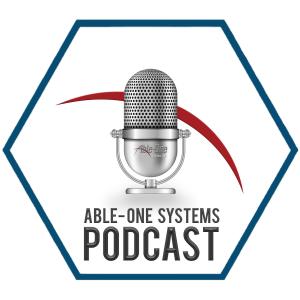Able-One Systems Podcast

Why Choose IBM Power 8 Server?
With Jordan Sojnocki, Marketing manager at Able-One Systems, and Dave Perco, Director of Power Server Solutions at Able-One Systems.
The IBM 8 Power Server is part of the IBM family of symmetric multiprocessing servers based on IBMs power processing technology. IBM Power is the nomenclature for the most recent generation of Power chips. Formerly known as the AS 400 and i Series/ p Series, IBMs current processing technology is titled Power 8. As a customer with an existing Power6 or Power7 server, a move to a Power8 server would represent a significant increase in processor performance while maintaining the reliability, scalability, security and other RAS features Power has become known for in the marketplace. It is estimated that customers moving from Power7 to Power8 will get a 40% increase in processor performance per core and those moving from Power6 to Power8 can see up to a 100% improvement. For customers who do not currently run a Power server, Dave highlights several key benefits from utilizing Power8:
Per core processing capability
Multiple operating systems supported
Virtualization capabilities
Security (widely-recognized as being second to none in the industry)
Integration of mobile devices
Anywhere/ anytime access
Support for latest development tools & languages
Ability to process mass amount of data
Furthermore, Power servers are unique in the industry from the fact Power supports 5 operating systems. The 5 currently supported operating systems on IBM Power are IBM i, AIX, the family of Linux based systems: Ubuntu, Redhat and Suse. Currently no other server technology out there exists with similar support for multiple operating systems. The Power architecture differs from other servers in the industry in several other ways. For instance, IBM uses 8 threads per processor core which no one else in the industry currently provides... this ultimately leads to better performance. Multiple performance comparisons have shown Power 8 is able to perform twice the number of transactions to an equivalent Intel server (when looking at a core per core comparison). A different way to look at this is that you only need half the number of cores on a Power server for equal performance to an Intel server (i.e. 4 core on Power = 8 core Intel). This becomes a big deal when you consider the costs on the application and database side of things. If you have an application that has core-based licensing, your costs can increase quickly when dealing with twice the number of cores than you need. On top of this is the maintenance based on per core price of applications. For example, an Oracle Database is expensive and customers will quickly see the advantage from the fewer cores an IBM Power server can provide. When considering virtualization it’s easy to forget that IBM has been virtualizing on the mainframe side of things for a long time. This included running multiple applications, independent of each other, on the same servers since the 1970’s. The Power server family itself has been virtualized since the 1990’s. Many people today know how great VMware is but all things considered, they are a late entrant to the market from a virtualization perspective. Dave recalls helping a customer in 1999 move from 8 servers down to 1 using virtualization. Since this has been happening for over 20 years, IBMs virtualization is mature and has the capability to virtualize with dedicated resources or shared resources - while maintaining separate environments. Many companies today find it critical to analyze large amounts of data in order to analyze business insights. The Power8 server customers commonly have massive amounts of structured and unstructured data. In order to analyze different data IBM has a couple of ways to help.






 Visit Podcast Website
Visit Podcast Website RSS Podcast Feed
RSS Podcast Feed Subscribe
Subscribe
 Add to MyCast
Add to MyCast